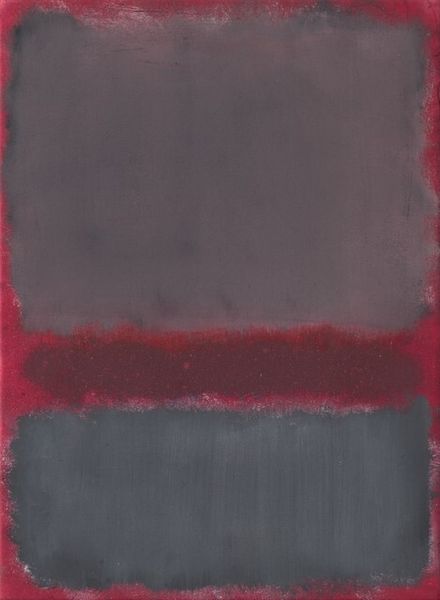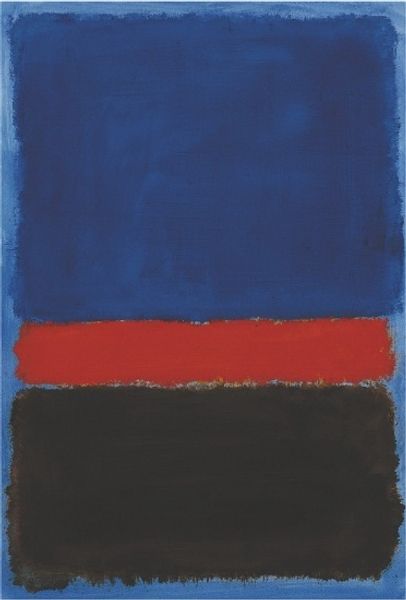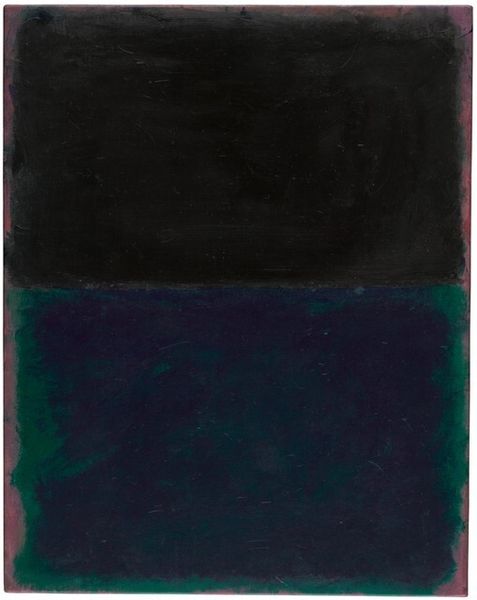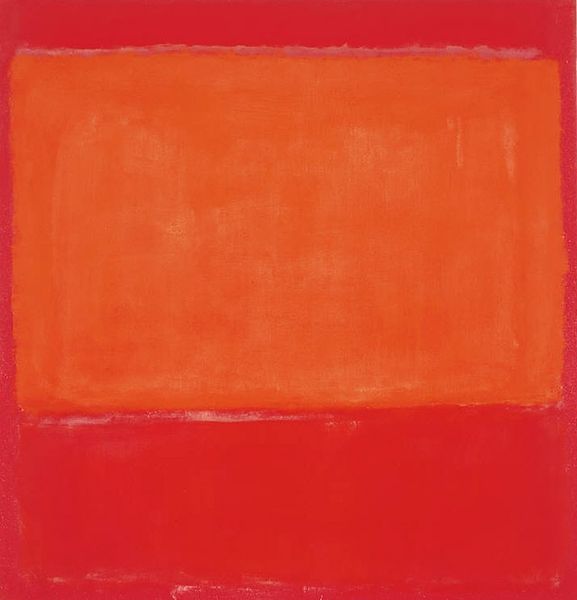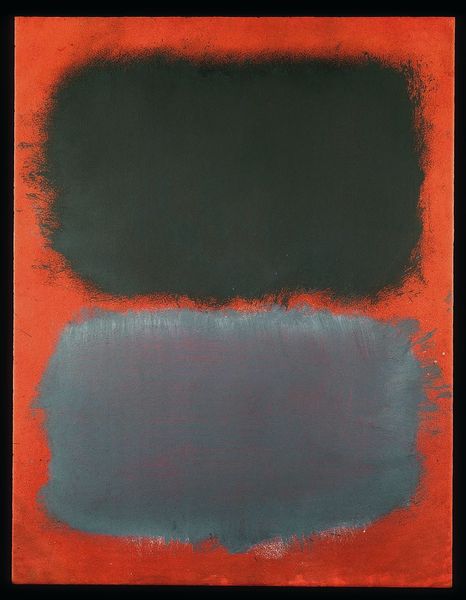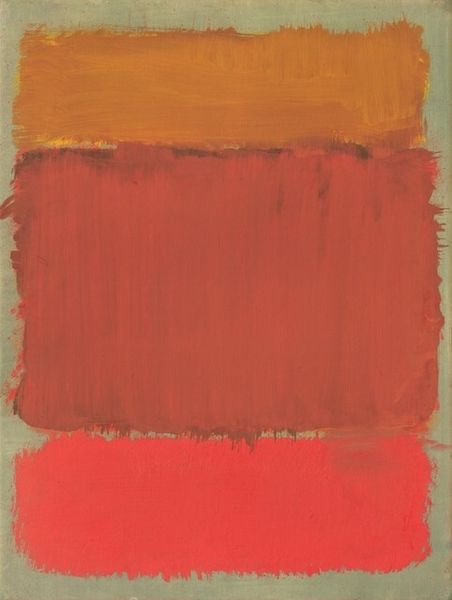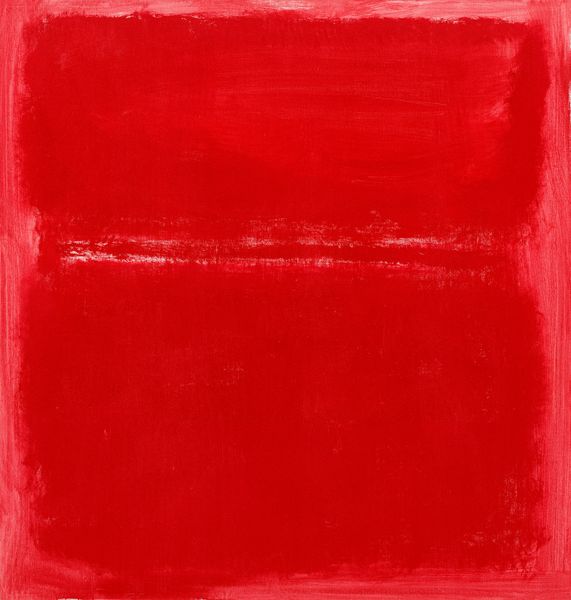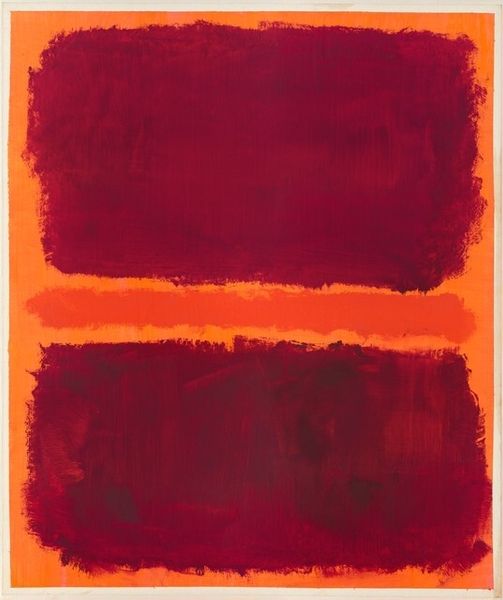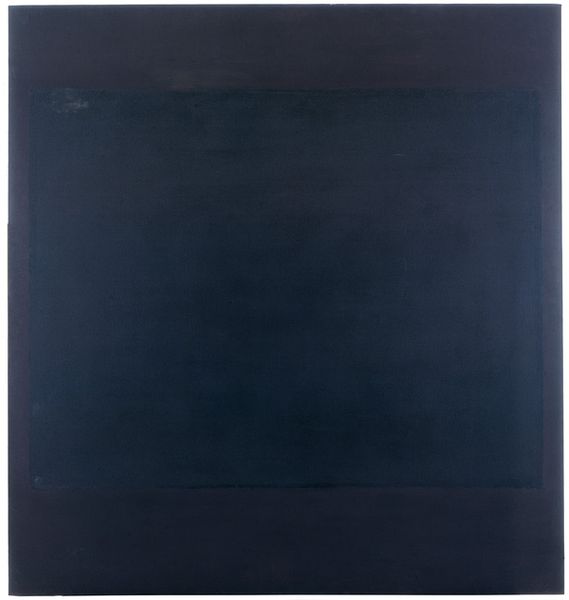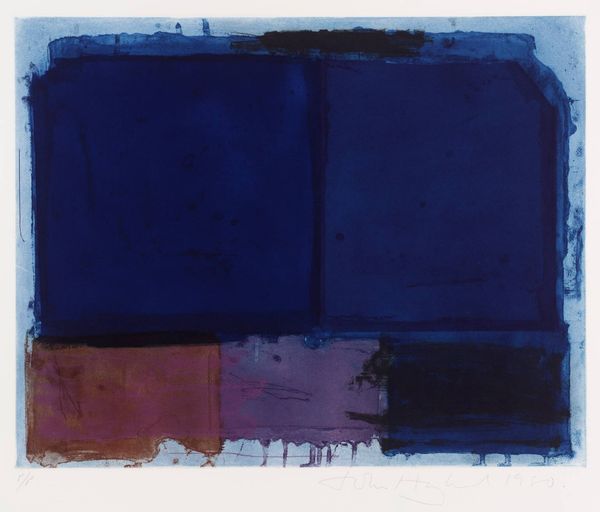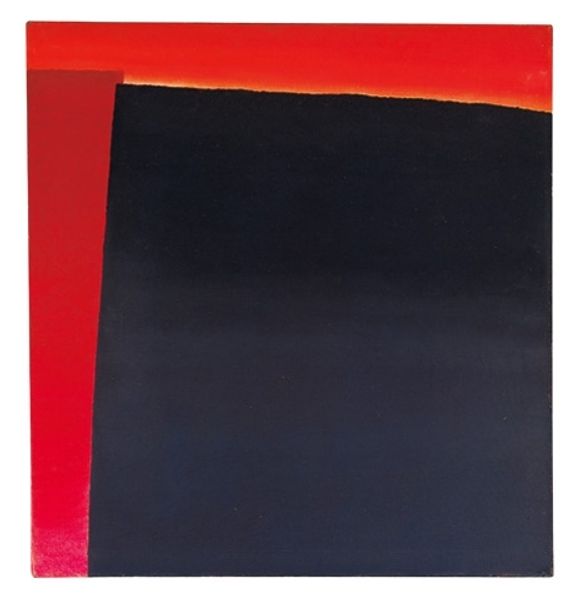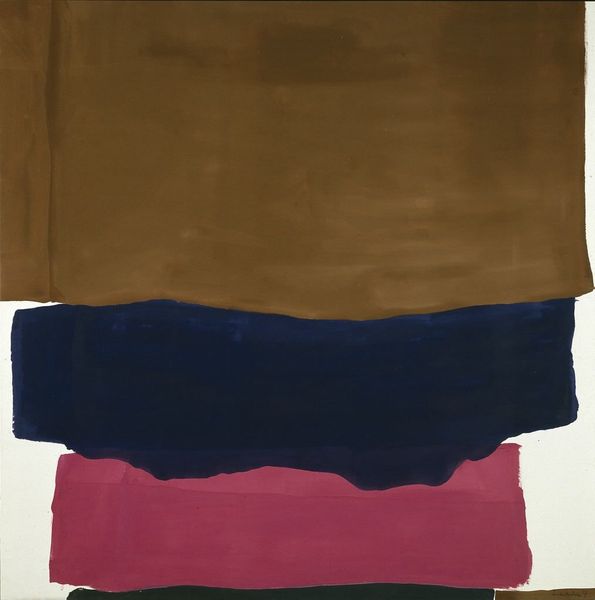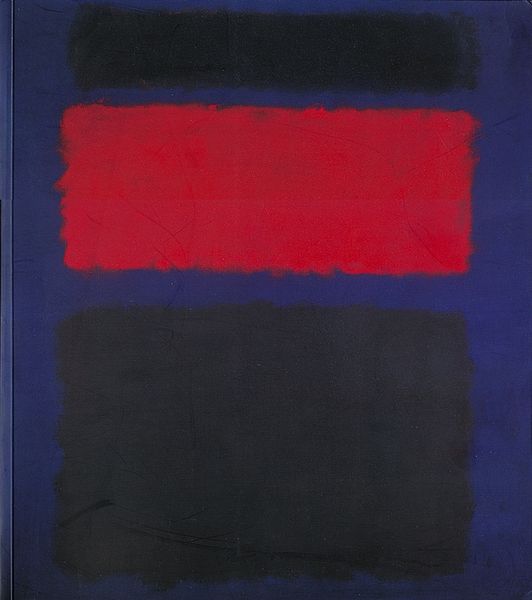
painting, oil-paint
#
abstract-expressionism
#
abstract expressionism
#
painting
#
oil-paint
#
colour-field-painting
#
geometric-abstraction
#
abstraction
#
abstract art
#
modernism
#
monochrome
Dimensions: overall: 100.49 × 65.09 × 3.65 cm (39 9/16 × 25 5/8 × 1 7/16 in.)
Copyright: National Gallery of Art: CC0 1.0
Curator: We’re looking at a classic example of Mark Rothko's color field paintings, this one simply titled "Untitled" and dating from 1968. What are your initial impressions? Editor: It’s arresting. The looming dark masses exert a kind of melancholic gravity. It feels very… heavy. What can you tell me about how it was made? Curator: Rothko's process was meticulous. He built up layers of thin oil paint, creating luminous, soft-edged rectangles. The making itself involved very tactile applications of diluted paint. He aimed to saturate the canvas and create a direct, visceral experience. How do the individual components contribute to this “heaviness” that you are experiencing? Editor: It's the interplay, I think. The tension between the somber blues and grays, offset by that vivid magenta halo, creates a spatial push-and-pull. The lack of defined form forces my eyes to continually adjust. The color field's immateriality allows a kind of dark contemplation. Curator: Absolutely. The scale and materials are integral. These paintings were meant to overwhelm the viewer, almost physically. Think about the oil paint itself – pigments sourced, ground, and suspended in oil, applied with brushes in the service of an artistic philosophy intended to deliver intense emotive experience through abstract means. Editor: Right, the scale envelops. It demands a somatic, almost meditative response, doesn’t it? Beyond just aesthetics, how was he working in his time? Curator: Well, by 1968, Rothko had refined his process to a specific formula and had already attained recognition in elite circles. Despite his high-art success, though, he spoke of his works needing to meet "the simple test of a presence.” That insistence that his creations, by design and presentation, achieve emotive profundity despite coming through markets and collectors feels pertinent still. Editor: A search for presence via abstraction. I do agree. Well, I’m glad we've had a chance to engage with Rothko's approach; it’s a challenging but often rewarding space for considering formalism in light of artistic intent. Curator: Indeed. Analyzing production techniques contextualizes it into a wider culture. I hope our visitors will come away with a fresh perspective on how materiality speaks.
Comments
No comments
Be the first to comment and join the conversation on the ultimate creative platform.
